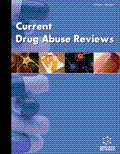Abstract
Neuronal dysfunction in the prefrontal cortex, limbic structures, nucleus accumbens and ventral tegmental area is considered to underlie the general physiopathological mechanisms for substance use disorders. Glutamatergic, dopaminergic and opioidoergic neuronal mechanisms in those brain areas have been targeted in the development of pharmacotherapies for drug abuse and dependence. However, despite the pivotal role of neurons in the mechanisms of addiction, these cells are not the only cell type in charge of sustaining and regulating neurotransmission. Glial cells, particularly astrocytes, play essential roles in the regulation of glutamatergic neurotransmission, neurotransmitter metabolism, and supply of energy substrates for synaptic transmission. In addition, astrocytes are markedly affected by exposure to ethanol and other substances of abuse. These features of astrocytes suggest that alterations in the function of astrocytes and other glial cells in reward circuits may contribute to drug addiction. Recent research has shown that the control of glutamate uptake and the release of neurotrophic factors by astrocytes influences behaviors of addiction and may play modulatory roles in psychostimulant, opiate, and alcohol abuse. Less is known about the contributions of microglia and oligodendrocytes to drug abuse, although, given the ability of these cells to produce growth factors and cytokines in response to alterations in synaptic transmission, further research should better define their role in drug addiction. The available knowledge on the involvement of glial cells in addictive behaviors suggests that regulation of glutamate transport and neurotrophins may constitute new avenues for the treatment of drug addiction.
Keywords: Addiction, glia, astrocytes, oligodendrocytes, microglia, alcoholism, opiates, psychostimulants
 47
47















